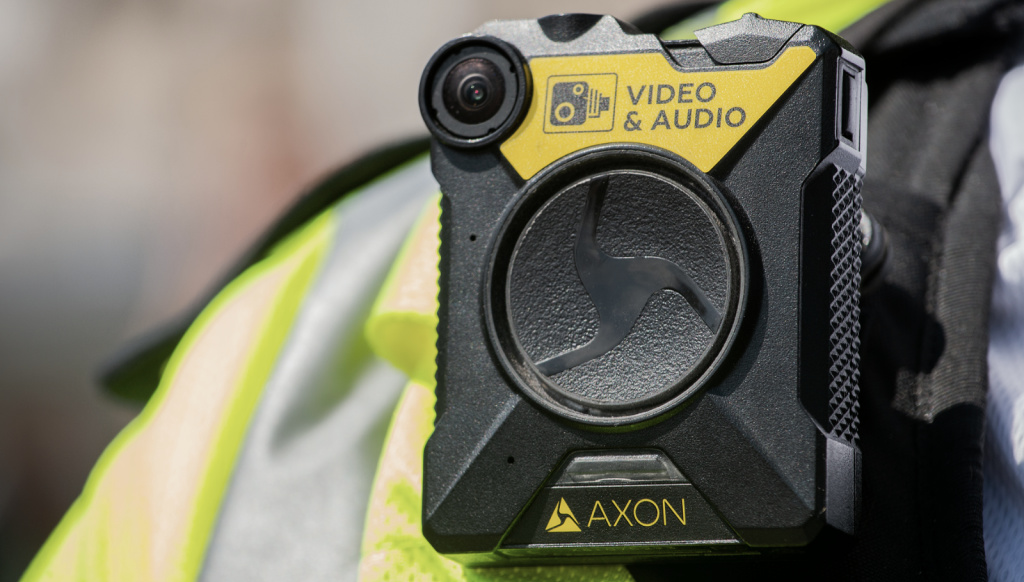U.S. Immigration and Customs Enforcement (ICE) announced a policy on January 12 calling for ICE personnel to wear body cameras in most situations when carrying out enforcement duties. According to ICE Deputy Director Patrick J. Lechleitner, the move is designed to build public trust by enhancing “accountability, effectiveness, and transparency in [ICE’s] law enforcement tactics.”
The program will build on learnings from a six-month congressionally mandated body camera pilot program that ICE ran in 2021 and 2022. But the data from that pilot has two critical gaps that must be addressed for the program to succeed.
If well-implemented, this policy could reduce harm by bringing greater accountability and transparency to ICE operations; for example, by reducing incidents of racial discrimination and excessive use of force. Some studies show that law enforcement body cameras have the potential to make police activity safer and more equitable.
A study of eight years of civilian complaint data from the Chicago Police Department showed that Black residents’ complaints were more likely to be dismissed and often contained insufficient evidence compared to the complaints of white residents. But when body cameras were introduced, those disparities “largely disappeared.” Another study, which incorporated a meta-analysis including data from police departments around the United States, showed that the use of body cameras reduced complaints against police by 17% and the use of force by police dropped by 10%.
These and other research findings point toward some major potential upsides of body cameras for ICE, especially given the longstanding and ongoing issues with racial discrimination and anti-Black racism in U.S. immigration enforcement.
The rollout will be informed by findings from ICE’s earlier body camera pilot program. In November 2023, the RAND Corporation released an. Their report includes some important ICE-specific findings that will be useful to those charged with implementing the rollout of the wider body camera initiative, such as lessons learned about technological logistics. But unfortunately, there were two major limitations in the data gathered as part of the pilot program—and addressing those information gaps will be key to the success of the new policy.
On the key question of whether ICE body cameras reduce use of force or complaints against agents, the authors of the report on the pilot program noted that the small sample size of the pilot made it difficult to draw any meaningful conclusions. To make sure that the body camera policy is working as intended to cut down on incidents of racial discrimination, excessive use of force, neglect, and other problematic behaviors, it will be critical for ICE to track and monitor relevant data across the entire rollout and over time, and to transparently share data with the public.
Alongside those potential benefits of body cameras, the technology can pose serious risks. Law enforcement body cameras generate personally identifiable footage of people during traumatic situations—including teenagers and children, as well as anyone else who happens to be nearby. Footage from ICE body cameras would capture people in moments of emotional and physical crisis and could reveal all sorts of sensitive details, including people’s medical information, social group affiliations, location details, and other private information. Some of this information could be life-threatening for vulnerable individuals if it fell into the wrong hands.
Those privacy and safety considerations highlight the second major limitation of the data gathered in the pilot program—according to the RAND analysis, much of the results rely on the opinions of ICE employees, rather than the public and the people who have contact with ICE employees. That is not a good start for a program aimed at building public trust. ICE must immediately address this oversight by gathering input from the people and communities most impacted by their activities. Without that, the program could backfire and cause much more harm than good.
Even with this fundamental missing piece in the data, it’s notable that one of the main concerns shared by ICE employees in the analysis of the pilot program centered on possible issues with body camera footage being made public, whether purposefully (as in through a Freedom of Information Act request) or unintentionally. Their concern indicates that strong procedures around the handling of body camera footage will be centrally important for all stakeholders and will be key to ensuring transparency and safety. Personnel who are responsible for securing—and when appropriate, redacting and releasing—the footage should have solid training and follow clear protocols.
In developing those protocols, as well as any other guidelines related to the body cameras, ICE simply cannot skip the step of gathering input from migrants, advocacy groups, and immigrant communities. There is no way for ICE to build public trust without involving its most important stakeholders.
As ICE begins to implement its new body camera policy, the safety and privacy of the vulnerable individuals the agency interacts with must be front and center. ICE should prioritize filling the key information gaps from the pilot program to ensure that the body camera policy is as safe and effective as possible.
FILED UNDER: Immigration and Customs Enforcement













